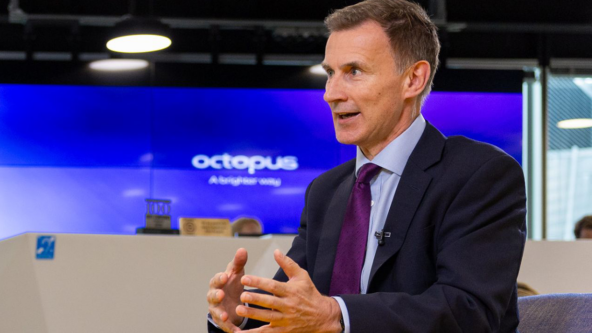From basic year-end tax planning to specialist tax-efficient investments, we’ve got you covered.
As we approach tax year end, you’ll no doubt be working hard to make sure your clients have made the most of their available tax-free allowances and reliefs.
To make your job easier at this busy time, we’ve prepared this handy checklist for you. Not only should it be a useful tax planning tool, but it could also help you spot new business opportunities.
Let’s start with the obvious year-end tax planning scenarios. Have your clients:
Used their £20,000 ISA allowance?
Made the most of their annual allowance for pension contributions?
Remember, they might be able to carry forward any of their allowance they haven’t used from the three previous tax years.
Used their annual capital gains tax exemption of £6,000?
Do they wish to crystalise gains to make the most of the allowance? Or, perhaps, they expect to crystalise gains in excess of the allowance?
Used their annual dividend allowance of £1,000 but expect investment income to exceed this?
Made the most of their gifting allowance of £3,000 to help plan for inheritance tax?
Helpful reminder: your clients can carry any unused annual exemption forward to the next tax year (but only for one tax year).
Moving onto ‘outside the box’ year-end tax planning:
At this time of year, it pays to think about broader tax scenarios. At Octopus Investments, we speak to financial advisers every day who recommend tax-efficient investments to support their clients’ tax planning. This is where you can really add value by providing additional advice to suitable clients.
So, let’s look at some specific scenarios where your clients could benefit from a specialist tax-efficient investment…
Has your client had a good bonus?
If the answer’s ‘yes’, significant income tax will likely be due, so it’s time to ask if they wish to use some or all their bonus to invest for their future. There are several ways they can invest their bonus tax-efficiently. This includes contributing to their pension.
But has your client maxed out their pension this year?
Though the annual pension allowance is £60,000, this is tapered for high earners. It could, in fact, be as little as £10,000. So, if your client is suitable, why not explore additional options that can help your client invest tax-efficiently for retirement? This might include Venture Capital Trusts (VCTs) which offer a way to invest for the future tax efficiently.
Is your client trying to take money out of their business tax efficiently?
The tax treatment of dividends has become tougher. The dividend allowance is small at £1,000 and there was a 1.25% increase to the tax rate back in April 2022.
If you have clients who own a business and want to take a dividend, there might be an opportunity to make an investment and offset the tax due. For example, with a VCT, 30% upfront income tax relief can be claimed against dividends.
Does your client want an inheritance tax-efficient ISA?
As you’ll know, it’s common for clients to build up large ISAs. But is inheritance tax an issue for your client? Do they want to use their ISA allowance to plan for inheritance tax, or use part of their existing ISA pot to plan for an inheritance tax liability? If the answer’s ‘yes’, you might want to look at Business Relief (BR). You’ll find more on this below.
Do you have clients who want to carry back income tax relief to the prior tax year?
Tax year end is the deadline by which someone must invest if they would like to carry back income tax relief to the prior tax year, a feature available when investing in EIS-qualifying companies. A Knowledge Intensive EIS Fund can provide the ability to undertake such planning, with relief available in the year the fund closes or the previous year (rather than the year in which money is deployed in underlying investments). Of course, they need to be open to investing in early-stage companies and comfortable with the risks involved.
Is your client crystallising gains in excess of the annual exempt amount?
There may be opportunities to help a client plan for capital gains tax. Among the possible approaches you might take, it’s worth remembering that an investor can defer a gain by investing in EIS-qualifying companies.
A gain made on the sale of other assets can be reinvested in EIS shares and deferred over the life of the investment. When the deferred gain comes back into charge, it’s subject to capital gains tax at the relevant rate at that time.
And now onto your tax-efficient investments checklist:
Have you considered Venture Capital Trusts?
A VCT is a listed company that buys small stakes in a large number of early-stage companies. VCTs offer attractive benefits to compensate investors for some of the risk involved. This includes income tax relief of up to 30% and tax-free dividends, typically targeting a 5% dividend yield each year. VCTs can be an attractive way to start to add unquoted investments to a portfolio, and to grow a tax efficient income through annual investment.
Have you considered the Enterprise Investment Scheme?
EIS is also an investment in early-stage companies, but investors hold shares directly in each one. EIS portfolios can be put together by specialist managers and target high levels of growth over the long term. Because shares in these companies are high risk, investors claim a powerful suite of tax reliefs. This includes income tax relief, tax-free growth, loss relief, capital gains deferral, and inheritance tax relief. EIS can form an attractive addition for experienced investors.
Have you considered Business Relief?
BR is an established relief from inheritance tax available for shares in qualifying companies, including those listed on the Alternative Investment Market (AIM). As such, it is possible to build an AIM ISA portfolio which can be left free from inheritance tax once it has been owned for two years. Compared to gifting, BR offers a faster inheritance tax solution to inheritance tax. It also allows investors to retain access to their capital and keep control of their wealth, provided an investor is happy to accept the risks of investing in AIM-listed companies.
A reminder of the risks:
It’s important to understand that the value of these investments, and any income from them, can fall as well as rise. Investors may not get back the full amount they invest.
Tax treatment depends on individual circumstances and tax rules may change in the future. Tax relief depends on portfolio companies and VCTs maintaining their qualifying status.
VCT shares and the shares of smaller companies are by their nature high risk, their share price may be volatile, and they may be hard to sell.
Ready to bring tax-efficient investments into your tax year end planning?
Lots of advisers recommend our tax-efficient investments to support their clients’ tax planning. So why not get in touch today to find out more about them?
You can contact your local Business Development Manager here.









